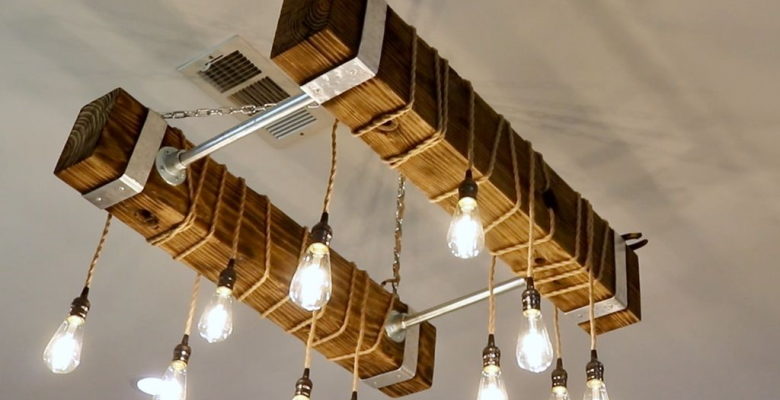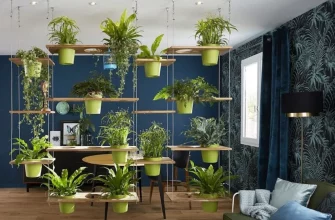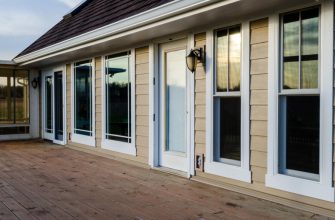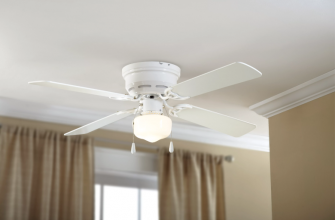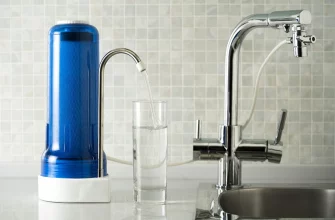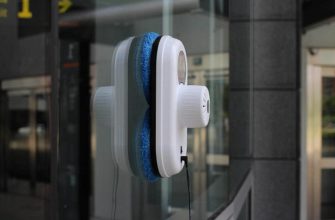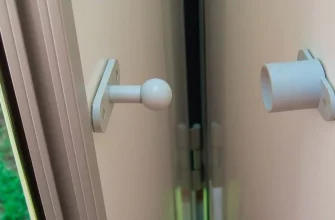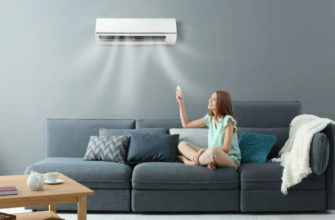Light fixtures play an important role in home decor and functionality. The right lighting can transform the look and feel of any room. This guide will provide tips on choosing light fixtures that match your home’s style, determining the proper lighting needs for each room, buying the most suitable fixtures within your budget, safely installing them, and maintaining them so they continue looking their best.
We’ll explore the different types of light fixtures, from chandeliers to sconces, understand bulb types like LED and incandescent, and cover factors like size, scale, color temperature and more. You’ll also find a step-by-step installation guide to help you securely mount your new lights.
With the information in this guide, you’ll be able to enhance your home with beautiful, functional lighting that makes your decor shine.
- Importance of Light Fixtures in Home Decor
- Benefits of Upgrading Light Fixtures
- Understanding Different Types of Light Fixtures
- Ceiling-Mounted Fixtures
- Chandeliers
- Pendant Lights
- Wall-Mounted Fixtures
- Sconces
- Vanity Lights
- Freestanding Fixtures
- Floor Lamps
- Table Lamps
- Factors to Consider Before Buying Light Fixtures
- Determining the Right Size and Scale
- Matching Fixtures with Room Decor and Architecture
- Understanding Lighting Needs for Different Rooms
- Choosing the Right Light Bulbs
- Understanding Different Bulb Types (LED, CFL, Incandescent)
- Selecting the Right Color Temperature
- Assessing Energy Efficiency
- Buying Light Fixtures
- Researching and Comparing Options
- Shopping Within Budget
- Considering Installation Requirements
- Installing Light Fixtures
- Safety Prec Precautions and Tools Needed
- Understanding Wiring and Electrical Systems
- Step-by-Step Installation Guide
- Tips and Tricks for Maintaining and Enhancing Light Fixtures
- Cleaning and Maintenance
- Upgrading and Customizing Fixtures
- Final Thoughts on Enhancing Your Home with Light Fixtures
Importance of Light Fixtures in Home Decor
Light fixtures serve both practical and decorative purposes in the home. Good lighting makes rooms safer and easier to navigate while also enhancing the aesthetic appeal of your decor.
On a functional level, light fixtures illuminate spaces to make them properly visible. They help prevent tripping hazards and allow safe usage of rooms after dark. Task lighting, such as under-cabinet lights in kitchens, provides focused illumination for cooking, reading or other activities.
As part of your home’s decor, light fixtures establish a style and visual interest. Choices like an ornate dining room chandelier or vintage pendants over a kitchen island add character and charm. Even simple flush mount ceiling lights make a statement and impact the room’s ambiance.
Light fixtures also transition spaces from room to room, tying common areas together. Coordinated lighting designs create better home flow and harmony. Consider your light fixtures as jewelry for your home, accenting features, architecture and furnishings.
Benefits of Upgrading Light Fixtures
Replacing outdated or builder-grade light fixtures provides many advantages that can dramatically improve your home.
New light fixtures increase brightness, eliminating dim rooms, shadows and eye strain. They also boost aesthetic appeal with stylish designs that better complement your furnishings and architecture. Updated fixtures often offer improved eco-friendliness as well, with energy efficient LED or CFL bulb options.
Another benefit is enhanced functionality. New fixtures solve issues like inadequate task lighting or minimal overhead lighting. Options like dimmers, motion sensors and remote controls add convenience too.
Safety also improves with new light fixtures lacking electrical problems old lights may have developed over years of use. Newer mounting hardware provides reliable stability as well.
Finally, changing light fixtures creates an instant decor update. New fixtures modernize living spaces without expensive remodeling. Coordinated lighting transforms room ambiance to match evolving personal style.
Understanding Different Types of Light Fixtures
Ceiling-Mounted Fixtures
Chandeliers
Chandeliers are ornate, decorative light fixtures that hang from the ceiling. They usually have multiple arms containing numerous light bulbs or candle-style bulbs. Chandeliers range from elegant crystal designs to funky modern styles.
These dramatic statement pieces typically hang in dining rooms or foyers. Mini chandeliers also accent bedrooms or other rooms. Their sparkle adds formal ambiance to spaces with high or vaulted ceilings.
Pendant Lights
Pendant lights hang from the ceiling like chandeliers but on a smaller scale. Single pendants contain one light bulb while multi-pendant fixtures feature several bulbs. Styles range from simple glass globes to artistic sculptures in materials like metal, wood or fabric.
Kitchen islands frequently utilize pendant lighting. The lights hang lower to provide task lighting for countertop activities. Pendants also illuminate seating areas in living rooms or dining spaces and accent architectural features like staircases.
Wall-Mounted Fixtures
Sconces
Wall sconces attach to walls instead of the ceiling. They come in a variety of designs from ornate gilt frames to industrial cage styles. Sconces work well flanking beds, mirrors and fireplaces. They also provide hallway lighting and accent lighting on exterior walls.
Sconces shine light upward and outward instead of down. This makes them ideal for highlighting architectural details. Their upward glow also creates ambient lighting without glare.
Vanity Lights
Vanity light fixtures illuminate bathroom mirrors and sinks. Horizontal designs mount above or on either side of the mirror. Circular fixtures often flank mirrors. These lights provide both task lighting and accent lighting.
Vanity lights range from basic horizontal strips to decorative fixtures. Their designs coordinate with bathroom decor. Options like Hollywood lights feature large bulbs that resemble vintage marquee lighting.
Freestanding Fixtures
Floor Lamps
Floor lamps stand on the floor instead of mounting to the ceiling or walls. They range in height from very tall accent lamps to shorter reading lamps. Varied bases provide weight and balance like weighted disc bases, tripod legs or long pole styles.
Floor lamps add style and flexibility in lighting design. They provide ambient and task lighting in living rooms, bedrooms and offices. Creative lampshade designs complement room decor.
Table Lamps
Table lamps sit on flat surfaces like nightstands, side tables, desks and dressers. Shorter than floor lamps, they provide more direct illumination. Table lamps come in a wide diversity of base materials and lampshades tailored to home decor style.
These portable fixtures allow flexible placement for task lighting and accent lighting. Table lamps provide softer ambient lighting in bedrooms as well. Choose coordinating lamp designs to tie furniture groupings together stylistically.
Factors to Consider Before Buying Light Fixtures
Determining the Right Size and Scale
When selecting a new light fixture, size and scale should suit the room. Overly large or small fixtures throw off room proportions. Measure the room’s dimensions along with ceiling height to gauge appropriate fixture sizes.
In living rooms, dining spaces and bedrooms, the fixture’s size should be proportional to the room. Hallways and kitchens can often accommodate smaller scale lighting. Take mounting height into account also. A fixture hanging lower to the floor may appear larger than the same fixture mounted higher up.
Matching Fixtures with Room Decor and Architecture
Coordinate light fixture finishes and styles with your home’s decor. Fixtures should complement architectural details as well. For example, sleek contemporary lights suit modern styled rooms while ornate vintage lights match traditional decors.
Consider finishes like oil-rubbed bronze, brushed nickel, polished chrome or antique brass. Match metals on fixtures to door hardware, kitchen faucets, ceiling fans and other metallic accents. The style should also fit room aesthetics from casual to formal.
Understanding Lighting Needs for Different Rooms
Lighting needs based on room function. For instance, kitchen task lighting aids food preparation while living room ambient lighting sets a relaxing mood. Provide adequate brightness for activities without over-lighting.
Kitchens require abundant task lighting over countertops plus ambient lighting to navigate the full space. Living rooms benefit from layers of light including accent lighting on artwork plus adjustable ambient lighting from table lamps or dimmers. Bedrooms need softer ambient and accent light conducive to relaxation.
Also consider lighting design layers like overhead general lighting supplemented by task lighting and accent lighting. The right balance creates both visual appeal and functionality tailored to the room.
Choosing the Right Light Bulbs
Understanding Different Bulb Types (LED, CFL, Incandescent)
Today’s light bulb options include incandescent, CFL and LED bulbs. Each has pros and cons to consider. Cost, brightness, color tones and longevity differ between bulb varieties.
Standard incandescent bulbs provide warm, natural light tones but use more energy with shorter lifespans. CFL bulbs utilize less energy but may have buzzing sounds with slightly different light color.
LED light bulbs offer the best energy efficiency and longest-lasting operation, lasting over ten years on average. However, they also come at a higher initial cost. Evaluate options to choose suitable bulbs for each fixture.
Selecting the Right Color Temperature
Light bulb color temperature dramatically impacts room ambiance and decor. Bulbs are available in warm white to daylight color temperatures ranging from 2700K to 6500K.
Lower Kelvin ratings like 2700K produce warm, yellowish light reminiscent of incandescent bulbs. Higher 4000-5000K temperatures give off a bright neutral to cool blue-toned light.
In general, opt for warmer 2700-3000K bulbs in living rooms, dining rooms and bedrooms. Use brighter 3500-4000K lights in kitchens, bathrooms and workspaces helping visibility for tasks.
Assessing Energy Efficiency
Check bulb lighting facts labels indicating lumens brightness and estimated yearly energy cost. Lumens measure total light output. Higher lumens indicate brighter bulbs. Most LEDs and CFLs utilize 60-80% less energy than traditional incandescents.
Also note the Energy Star rating. These independent ratings confirm the bulb’s exceptional energy efficiency and savings. Choosing Energy Star certified LED bulbs provides the best eco-friendly lighting.
Buying Light Fixtures
Researching and Comparing Options
Take time researching light fixtures available in your desired style. Browse online retailers, lighting showrooms and home improvement stores. Narrow choices down to a few front-runners that meet your lighting needs, design aesthetic and budget.
Compare specs like materials, finishes, bulb type, light output and energy efficiency. Reputable manufacturers often provide better warranties as well. Then order samples if possible to view their size, styling and light quality in person before confirming your purchase.
Shopping Within Budget
Set a realistic lighting budget before shopping. Simple flush mount ceiling fixtures cost approximately $25-100. More complex chandeliers and pendant lighting run $100 on into the thousands. Create room-by-room budgets tracking spending as you go.
Seeking sales through online retailers, lighting distributors and home improvement stores can yield major savings. Use coupons and loyalty programs to further discounts. Consider price matching policies also to get the lowest price.
Considering Installation Requirements
Factor in installation costs if you’ll be hiring an electrician. Simpler, direct wire lights may only cost $50-100 to install while complex fixtures requiring wiring and structural enhancements may cost $500 or more.
Also assess if you need additional materials like wiring, conduit, junction boxes, mounting hardware, dimmers or smart home tech. Providing necessary items ahead cuts labor time and costs.
Installing Light Fixtures
Safety Prec Precautions and Tools Needed
Installing light fixtures presents electrical shock risks and falling item hazards. Take safety measures like turning off circuit breakers to the fixture and working with a partner to support heavy fixtures. Use a non-contact voltage tester to double check power is off. Provide adequate ladder safety with slip-proof shoes, careful placement and someone stabilizing the ladder.
Protect eyes with safety goggles when drilling or exposed to debris. You’ll need basic hand tools like screwdrivers, wire strippers, pliers, a circuit tester, stepladder and drill with wire fishing tools. Gather any new wiring, hardware or supplies required before beginning. Ensure you have all necessary items for a smooth, safe installation.
Understanding Wiring and Electrical Systems
Familiarize yourself with basic home electrical systems. Current flows from hot wires to neutral wires completing a circuit. Ground wires protect from shock if current leaks. Romex sheathing contains all three wires.
Most household circuits share 15-20 amps. Connecting multiple high-watt fixtures can overload circuits, blowing fuses. Each fixture connects to the hot wire for power and neutral to complete the circuit.
When wiring fixtures, match wire colors connecting hot to hot, neutral to neutral, ground to ground. Twist same-color wires together clockwise then secure with wire nuts. Ensure bare ground wire does not contact current-carrying wires.
Step-by-Step Installation Guide
Follow these basic steps to safely install light fixtures:
- Turn off power at the circuit breaker.
- Remove old fixture including all wiring connections.
- Feed new wires from new fixture through the electrical box.
- Connect matching wires together securely with wire nuts.
- Mount the new fixture’s base to the electrical box per included directions.
- Attach new fixture to the base following manufacturer instructions.
- Restore power and test that the new light works correctly.
Carefully inspect all electrical connections and follow installation directions specific to your new fixture for best results. Call an electrician if you have any doubts about safely completing the install yourself.
Tips and Tricks for Maintaining and Enhancing Light Fixtures
Cleaning and Maintenance
Dust buildup on light fixtures causes dim, yellowed lighting. Clean fixtures regularly inside and out. Use microfiber cloths and cleaning products appropriate for each fixture’s materials.
Check hardware like chains and wires for wear or corrosion. Replace damaged components for safety. Lubricate squeaky ceiling fan fixtures to prevent wear. Confirm electrical connections stay tight, resecuring loose wires.
Also replace bulbs as needed with the correct wattage and light color. Use manufacturer recommended bulbs to prevent damage, ensuring optimal light quality and longevity.
Upgrading and Customizing Fixtures
Over time, upgrade light fixtures to match evolving personal style. Swap outdated flush mount ceiling lights for eye-catching new pendants and chandeliers. Freshen bathroom sconces or vanities with more modern options.
Customize lighting by spray painting fixtures, adding decorative lampshades or replacing lamp bases. Layer lighting by incorporating different fixture types like adding track lighting. Experiment with smart bulbs providing adjustable color temperatures.
Improving lighting breathes new life into old rooms. Take inspiration from interior design trends and blogs to create lighting suited to your unique personality and home.
Final Thoughts on Enhancing Your Home with Light Fixtures
The right light fixtures introduce striking style while also meeting practical lighting needs for navigation, tasks and ambiance. With such a diversity of options from dramatic chandeliers to utilitarian track lights, the perfect fixtures exist for enhancing every room.
Invest time assessing your lighting requirements and decor goals for each living space. Shop smart, choosing energy efficient fixtures scaled and styled suitably for the intended room. Follow safe installation procedures, provide ongoing maintenance, and update fixtures as needs and trends change.

